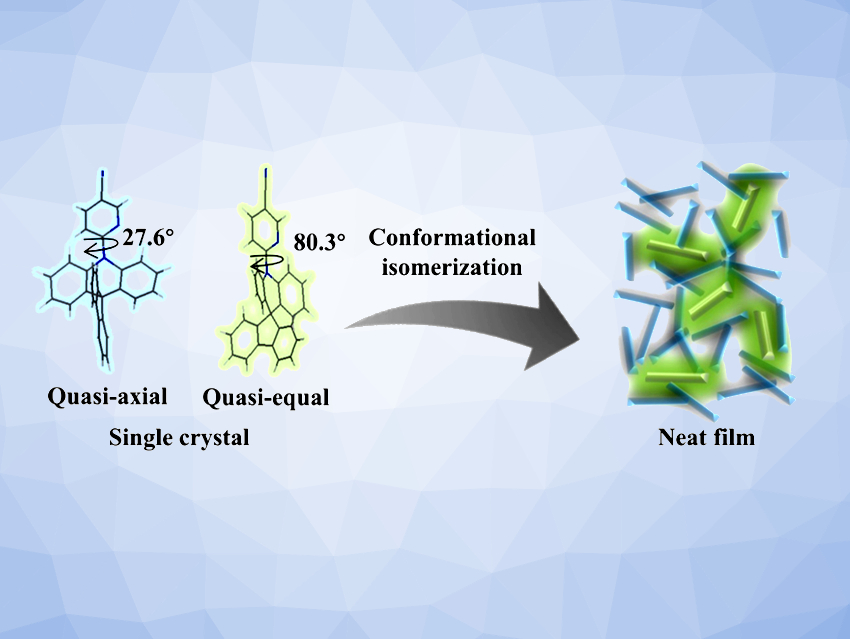Thermally activated delayed fluorescence (TADF) materials with aggregation-induced emission (AIE) features can overcome aggregation-caused quenching (ACQ), which usually causes low emission of dyes in the solid state. Thus, these materials can emit intensely in aggregate states and have attracted much research attention. They can be useful, e.g., in high-efficiency organic light-emitting diodes, bioimaging, or photocatalysis. However, their exact working mechanisms are still not entirely clear.
Xiao-Hong Zhang, Kai Wang, Soochow University, Suzhou, China, Yi-Zhong Shi, Suzhou University of Science and Technology, China, and colleagues have developed a new TADF molecule, 6-(10H-spiro[acridine-9,9′-fluoren]-10-yl)nicotinonitrile (CNPy-SPAC), by connecting the donor unit, spiro[acridine-9,9′-fluorene] (SPAC), and the acceptor unit, a pyridine-decorated benzonitrile (CNPy), via a single C–N bond.
In a dilute tetrahydrofuran (THF) solution, CNPy-SPAC displays a weak green emission with a low photoluminescence quantum yield (PLQY) of 6.9 %. When water is added, the solute CNPy-SPAC molecules gradually aggregate, and PLQYs as high as 40.3 % are reached. Thus, CNPy-SPAC is a typical AIE-TADF material. Based on a conventional “restriction of intramolecular motions” (RIM) mechanism, further restricting intermolecular motions should further enhance the PLQYs. However, two different CNPy-SPAC single-crystal samples show low PLQYs of 23.9 % and 6.9 %, respectively. In contrast, a high PLQY of 88.8 % was observed for an amorphous neat film. These phenomena cannot be explained by the conventional RIM mechanism.
The team proposes that conformational isomerization accounts for the high PLQY of the amorphous neat film, in which a quasi-axial (QA) conformation with non-TADF features and a quasi-equal (QE) conformation with TADF characteristics (both pictured above) serve as the host matrix and dopant, respectively. This suppresses ACQ in disordered aggregate states. This work offers a possible new mechanism for AIE-TADF behaviors and could also provide a new approach to designing high-efficiency AIE-TADF emitters.
- Conformational isomerization: A novel mechanism to realize the AIE‐TADF behaviors,
Hao Wu, Xiao‐Chun Fan, Hui Wang, Feng Huang, Xin Xiong, Yi‐Zhong Shi, Kai Wang, Jia Yu, Xiao‐Hong Zhang,
Aggregate 2022.
https://doi.org/10.1002/agt2.243



